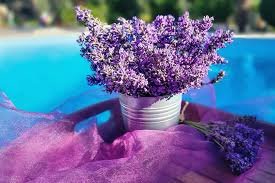1. Introduction
Indoor lavender plant care is both an art and a science. Lavender is beloved for its fragrant blooms, calming aroma, and rustic beauty — but growing it successfully inside requires attention to light, soil, temperature, and more. In this article, I’ll share everything I’ve learned from years of growing lavender indoors — the best practices, mistakes I made so you won’t, and expert advice you won’t find elsewhere.
2. Why Growing Lavender Indoors Is Different
- Native habitat: Mediterranean regions with bright sun, well-draining soil, seasonal changes. Adapting that indoors means replicating those elements.
- Common challenges: weak light, high humidity, overwatering, lack of airflow, inappropriate pot type.
3. Choosing the Right Lavender Variety
- Dwarf / compact varieties vs full-sized. Dwarfs are easier to maintain indoors. Examples: Munstead, Hidcote, Goodwin Creek Grey.
- What each variety offers: fragrance, bloom colour, hardiness, shape.
- Matching variety to your space (window size, sun exposure, pot size).
4. Light Requirements & Positioning
- Aim for at least 6-8 hours direct sunlight daily. South or west facing windows usually best.
- When natural light is inadequate: use full-spectrum LED grow lights (how far from plant, hours on/off schedule).
5. Soil, Pots, and Drainage
- Best soil mixes: potting soil amended with sand/perlite/cactus mix. Slightly alkaline if possibl.
- Pot types: terracotta / unglazed clay preferred because they allow moisture evaporation. Ensure drainage holes.
- Repotting schedule: when root bound or soil has degraded (usually every 1-2 years).
6. Watering & Humidity Management
- Watering schedule: let top ~1-2 inches of soil dry out before watering thoroughly. Never let water stand in drainage tray.
- Humidity: lavender prefers lower humidity (40-50% or less). Avoid placing near humidifiers or in bathrooms. Use dehumidifier or ensure good air flow.
7. Temperature & Seasonal Cycles
- Ideal temperature: Daytime ~60-75°F (15-24°C), cooler nights by ~5-10°F if possible.
- Winter care/dormancy: many lavenders benefit from cooler temps and reduced watering in winter; light still essential.

8. Pruning, Propagation & Growth Control
- Pruning: after flowering, remove spent blooms; trim to shape; avoid heavy pruning into old wood.
- Propagation: from cuttings vs seeds vs root divisions. Step-by-step for cuttings since seeds are slow and inconsistent.
- How to avoid legginess (stretching): rotate pot, prune back tips.
9. Pests, Diseases & Troubleshooting
- Common pests: aphids, spider mites, whiteflies; how to see signs, organic treatments.
- Fungal problems / root rot: caused by overwatering, poor drainage, high humidity. How to remedy.
- Common symptoms & diagnosis:
| Symptom | Likely Cause | Solution |
|---|---|---|
| Yellow leaves at base + soggy soil | Overwatering or waterlogging | Reduce watering, repot into better-draining soil, inspect drainage |
| No blooms, tall thin stems | Poor light or overfertilizing | Increase light, reduce nitrogen-heavy fertilizer, prune back to stimulate bushy growth |
| Brown tips or fungal spots | High humidity / stagnant air | Improve ventilation, remove affected parts, avoid misting leaves |
10. Fertilizer, Feeding & Supplements
- When to fertilize: spring through summer only; use a balanced, preferably organic or slow-release fertilizer, diluted. Avoid high nitrogen which favours foliage not flowers.
- What supplements / amendments might help: crushed shells for calcium, occasional compost, maybe pH adjustment.
11. Indoor Lavender in Different Climates & Spaces
- Tropical / high humidity areas: needing dehumidifiers, air-flow, careful watering, perhaps location adjustment.
- Cold climates / short daylight: supplement lighting, bring inside earlier.
- Small spaces / low light apartments: pick dwarf, use grow lights, maintain more aggressively via pruning.
12. Harvesting, Use & Aromatherapy
- When to harvest blossoms for fragrance, drying.
- Best time of day for harvesting.
- Uses: dried bundles, sachets, tea, cosmetic uses.
- Storage tips.
13. Frequently Asked Questions (FAQ)
- “Will lavender bloom indoors?”
- “How often do I need to repot?”
- “Why are leaves turning grey or black?”
- “Can I bring an outdoor lavender plant indoors for winter?”



